On one of our final days in Albuquerque, NM we drove out to Pecos. About 90 minutes northeast of Albuquerque and 30 minutes southeast of Santa Fe, it’s home to Pecos National Historical Park.
Pecos National Historical Park preserves Pecos Pueblo, a pueblo which once housed more than 2,000 people. It also plays host to the remains of a 1700s Spanish church which was built near the pueblo in an attempt to convert the Pecos people.
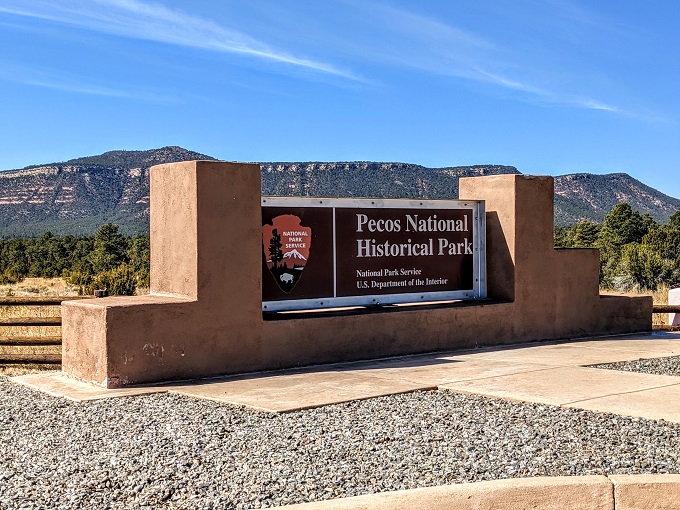
As with other National Park Service locations we’ve visited this past year, the visitor center was closed due to COVID. However, they did have a table with an NPS employee outside to provide information and answer questions. In addition to the NPS passport stamp and park leaflet, there was a Ancestral Sites Trail Guide which cost $2. That guide is worth getting as it contains more information about the 16 numbered locations around the site.

Pecos Pueblo once had a wall around it which designated the city limits. Some of the wall still stands today and is one of the first parts of the pueblo you encounter.
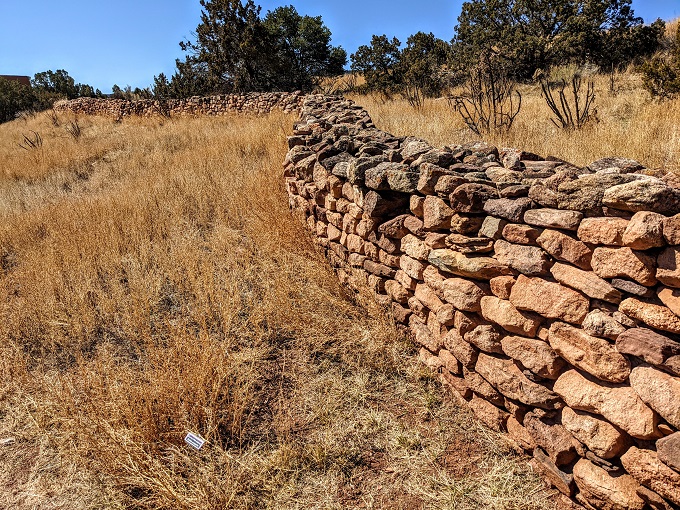
Pecos Pueblo once contained more than 20 kivas. In case you’ve missed our other posts from locations like Chaco Culture National Historical Park, Aztec Ruins National Monument and Bandelier National Monument, kivas were circular rooms which were used for a number of different ceremonial purposes.
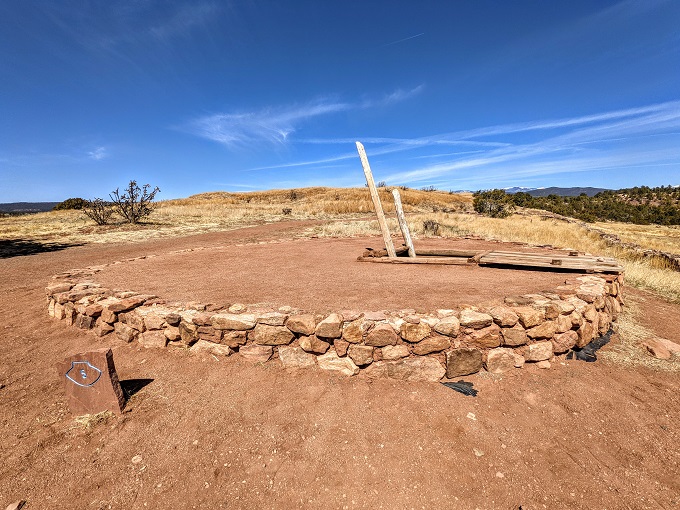
Similar to how Aztec Ruins National Monument has reconstructed the large kiva at their site, Pecos National Historical Park has a couple of reconstructed kivas of their own. You can climb down the wooden ladder to take a look inside to see what it would have once been like.
At the base of the ladder in the photo below you can see a small hole in the wall. That’s a ventilator shaft which helped provide the room with fresh air. This was needed because beneath the hole in the roof where the ladder is located there was a fire pit. The stones surrounding the fire pit helped shield the fire from drafts coming from the ventilator shaft.
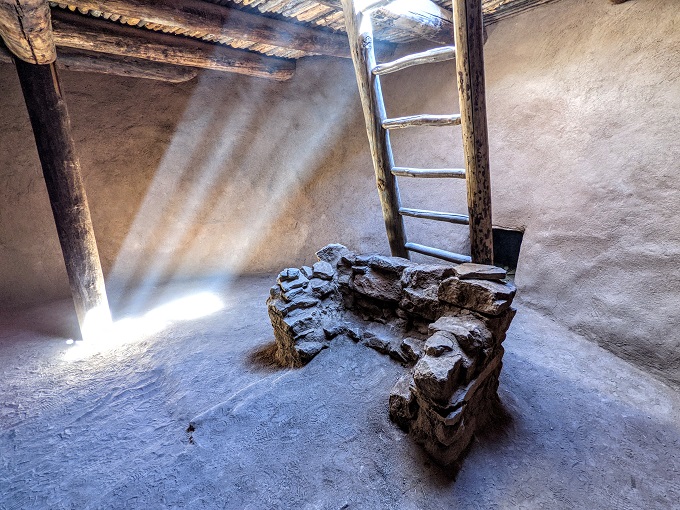
Another great feature of Pecos National Historical Park is that it’s pet-friendly. We therefore brought Truffles along with us for the day, so she waited patiently for us while we took it in turns to go down into the kiva.
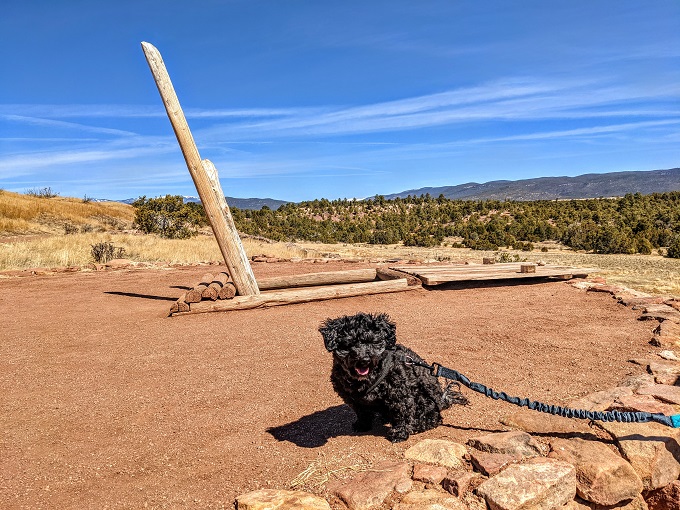
With thousands of Pecos people living in the pueblo over thousands of years, their trash had to go somewhere. There’s a 20+ foot mound which the trail passes over that has their trash and debris buried beneath. Past excavations helped establish more information about their culture based on broken pottery and other items which were found.
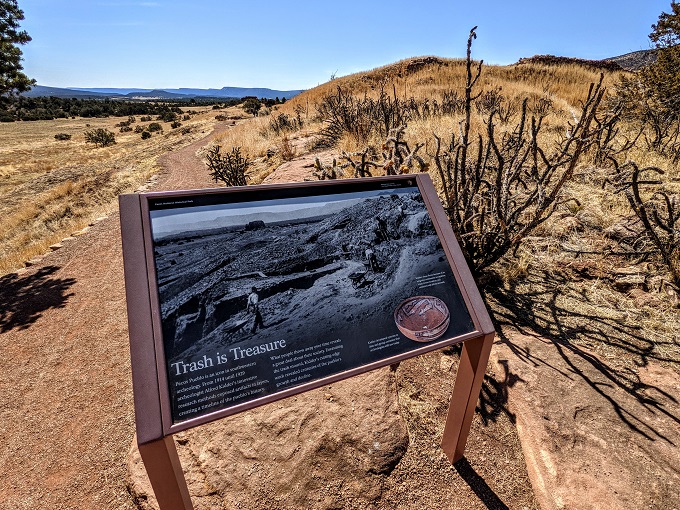
In addition to a couple of reconstructed kivas, the park has some which have been left as they were after excavations.
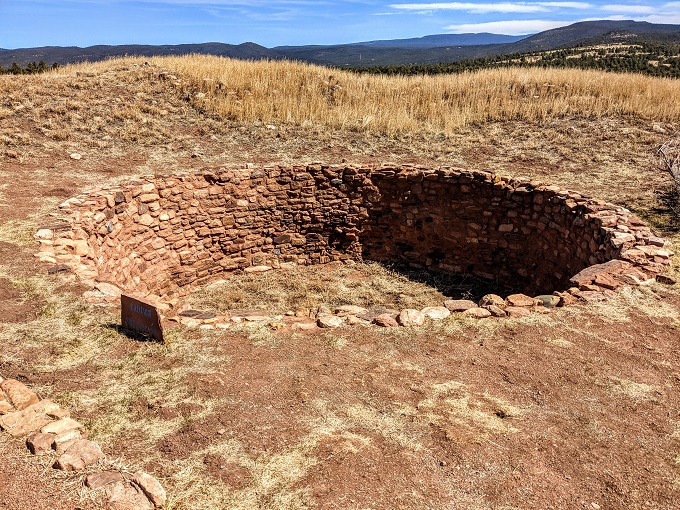
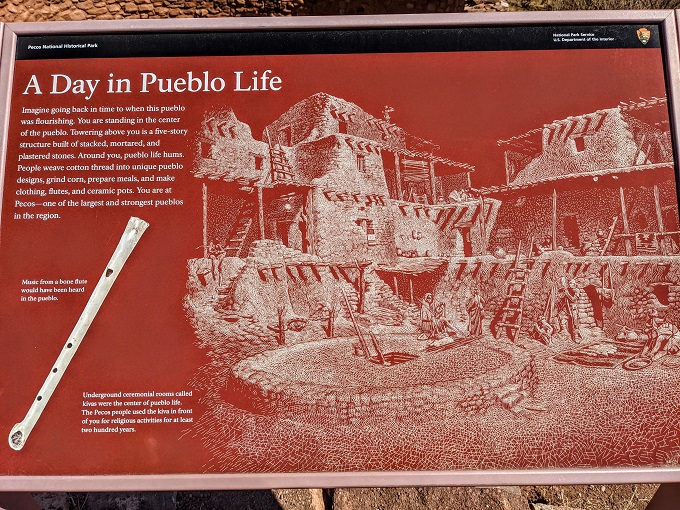
The most striking feature of Pecos National Historical Park wasn’t originally part of the Pecos Pueblo. In the 1500s Spanish expeditionaries visited Pecos and subsequently built a mission church in 1619. A second church was completed in 1625, a third church in the years after that and a fourth and final church was completed in 1717.
The church’s full name is Mission Nuestra Señora de los Ángeles de Porciúncula de los Pecos which means ‘Mission of Our Lady of the Angels of Porciúncula’. The foundations of the 1625 church are still there and can be seen in the photo below (they’re the low level walls rising about a foot off the ground), with the remains of the 1717 church being the taller structure. When approaching the mission, there’s an information board which shows how large the building was hundreds of years ago versus what remains now.
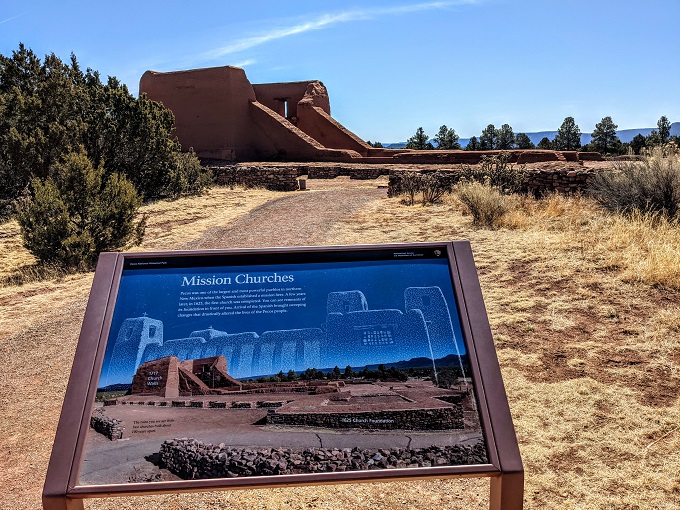
The trail at Pecos National Historical Park continues up to the mission.
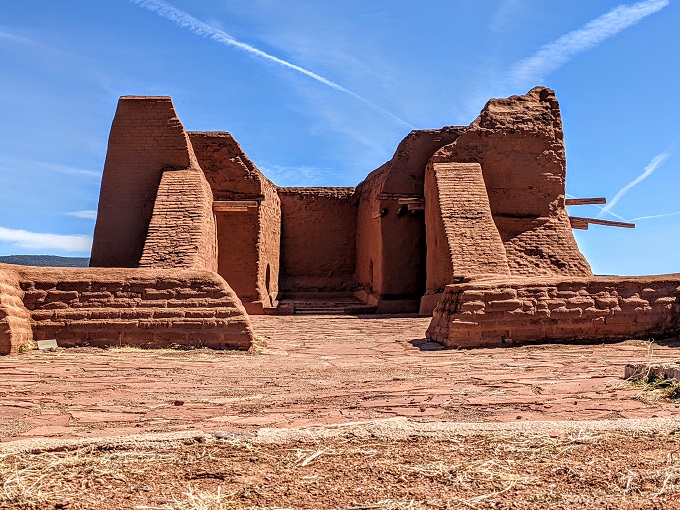
Next to the church are the remains of the convento, the building which was home to the mission’s priests and which was also used for the church’s activities.
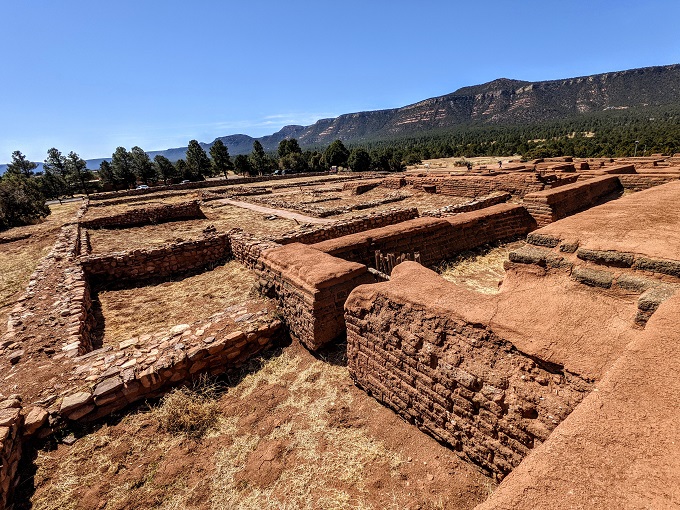
On the outer area of the convento were the remains of a ramada and torreón. The stone rings you can see in the photo below indicate where posts were once set in the ground to support the roof of a ramada which was a brush shelter. Horses would have been tied to the posts so that they could remain in the shade when people visited the first church.
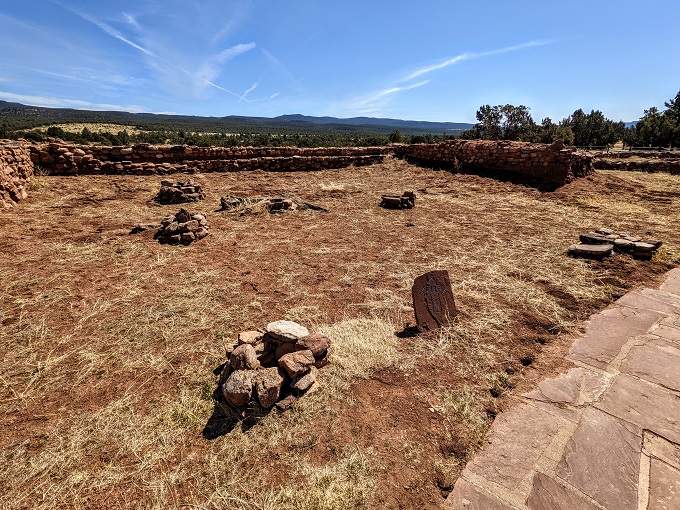
The torreón is D-shaped and once served as a watch tower in the 1700s.
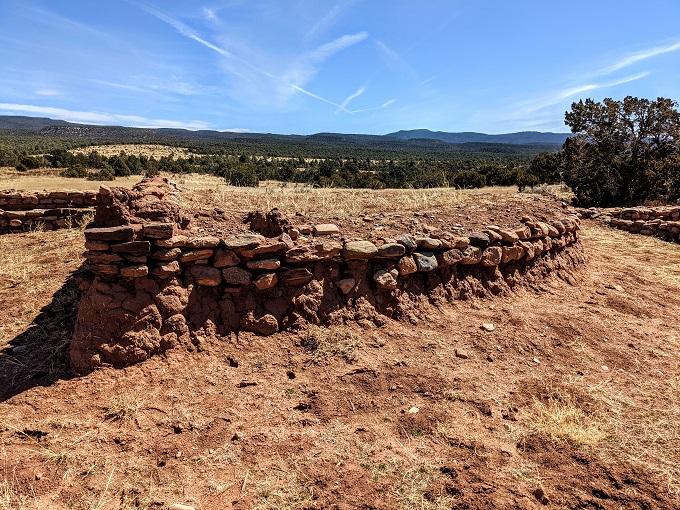
The convento at Pecos National Historical Park is one of only three Franciscan conventos to feature a kiva. This was built between 1620 and 1640 and it’s thought that it might have been built to provide a familiar structure for the Pecos people to learn about Christianity.
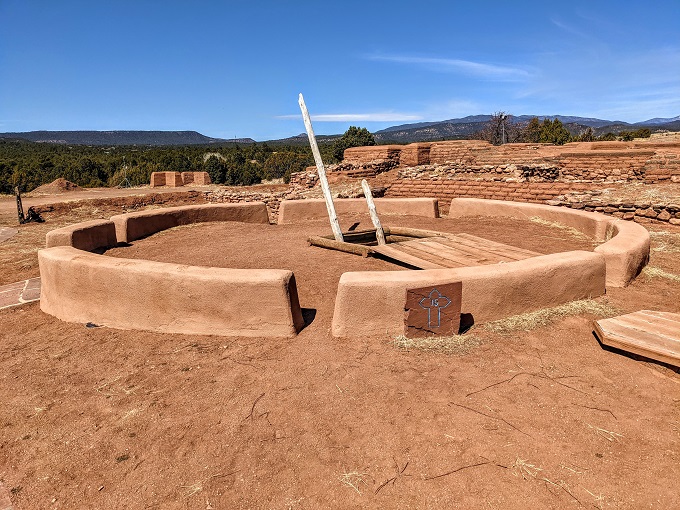
As with the kiva earlier on the trail, the convento kiva has been reconstructed to give an idea as to what it would have looked like when used back in the 1600s and 1700s.
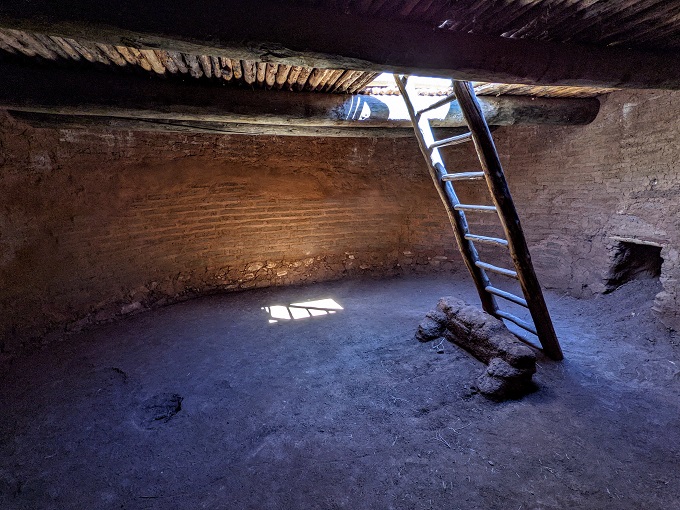
Glorieta Pass Battlefield Trail
About 15 minutes away by car is the Glorieta Pass Battlefield Trail which is also part of Pecos National Historical Park. Glorieta Pass was the site of a Civil War battle between Confederate and Union soldiers who were trying to gain control of the Santa Fe Trail and gold fields in Colorado.

If you want to visit this separate site, be aware that there’s a padlocked gate which you need to know the code for. You can get the code from the visitor center (or the employee outside the visitor center if you visit during COVID times).
The main trail is 2.25 miles long, although there’s an accessible trail which is about half a mile long round trip.
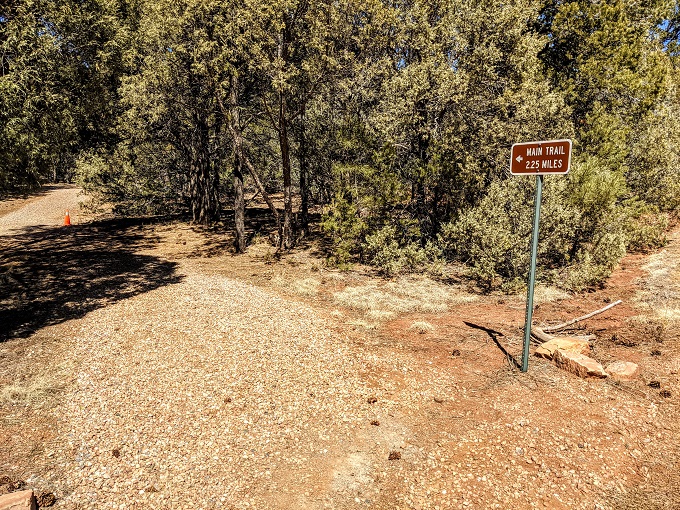
We’ve been to a number of Civil War sites on our 50 state road trip, so we were intrigued to learn about New Mexico’s involvement in the war as that’s not something we’d ever heard about.
We’d bought a Glorieta Pass Battlefield Trail guide back at the main Pecos site for $2 so that we’d know what we were looking at, but there were also several information boards around the site sharing more about the battle which took place from March 26-28, 1862.

To be honest though, Shae and I didn’t find the trail too interesting which was a shame. Although the information boards and trail guides explained what happened during the battle, the site is now just woodland with a trail running through it which makes it much harder to envisage the battle versus somewhere like Antietam National Battlefield.
If you’re a Civil War buff then I’m sure this trail will be fascinating, but if you just have a general appreciation for history and the Civil War like us, don’t feel too disappointed if you don’t have time to make it over to this trail – the main Pecos National Historical Park site is far more interesting.
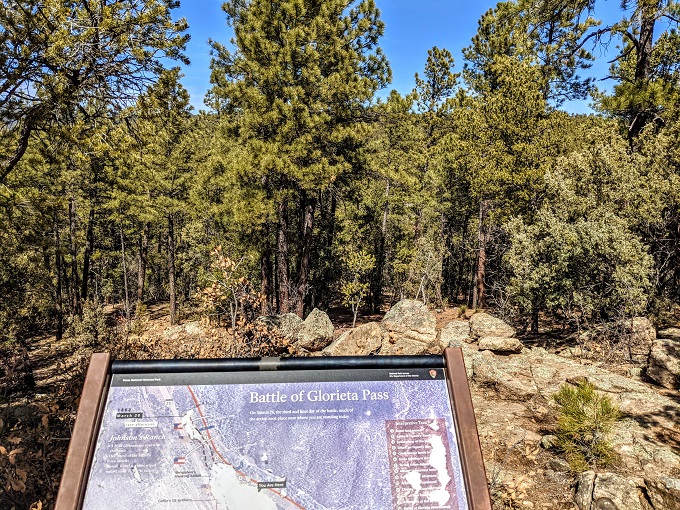
Nice article on the Pecos site. Thanks for posting
Thanks!